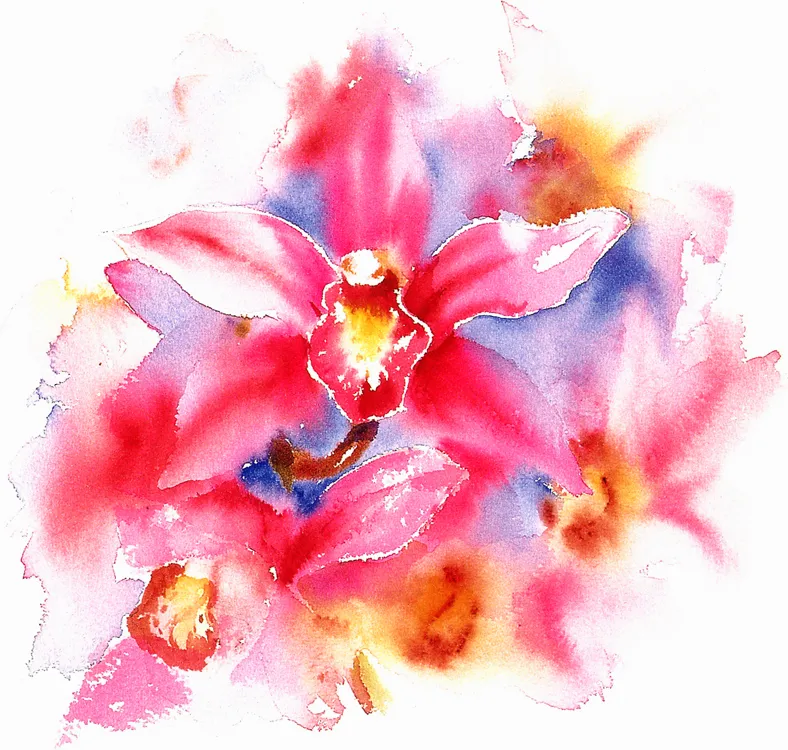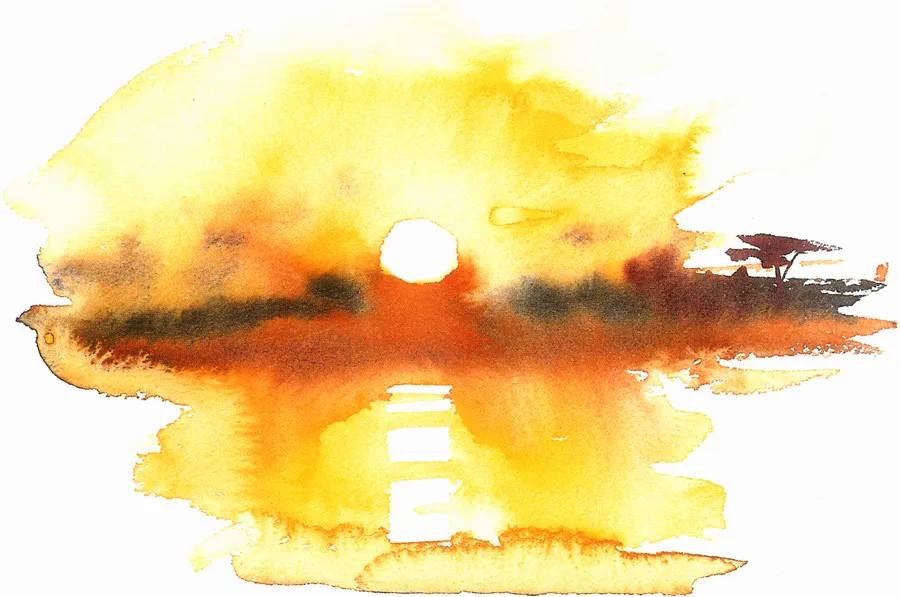
eBook - ePub
Secrets of Watercolour Success
Hazel Soan
This is a test
Condividi libro
- English
- ePUB (disponibile sull'app)
- Disponibile su iOS e Android
eBook - ePub
Secrets of Watercolour Success
Hazel Soan
Dettagli del libro
Anteprima del libro
Indice dei contenuti
Citazioni
Domande frequenti
Come faccio ad annullare l'abbonamento?
È semplicissimo: basta accedere alla sezione Account nelle Impostazioni e cliccare su "Annulla abbonamento". Dopo la cancellazione, l'abbonamento rimarrà attivo per il periodo rimanente già pagato. Per maggiori informazioni, clicca qui
È possibile scaricare libri? Se sì, come?
Al momento è possibile scaricare tramite l'app tutti i nostri libri ePub mobile-friendly. Anche la maggior parte dei nostri PDF è scaricabile e stiamo lavorando per rendere disponibile quanto prima il download di tutti gli altri file. Per maggiori informazioni, clicca qui
Che differenza c'è tra i piani?
Entrambi i piani ti danno accesso illimitato alla libreria e a tutte le funzionalità di Perlego. Le uniche differenze sono il prezzo e il periodo di abbonamento: con il piano annuale risparmierai circa il 30% rispetto a 12 rate con quello mensile.
Cos'è Perlego?
Perlego è un servizio di abbonamento a testi accademici, che ti permette di accedere a un'intera libreria online a un prezzo inferiore rispetto a quello che pagheresti per acquistare un singolo libro al mese. Con oltre 1 milione di testi suddivisi in più di 1.000 categorie, troverai sicuramente ciò che fa per te! Per maggiori informazioni, clicca qui.
Perlego supporta la sintesi vocale?
Cerca l'icona Sintesi vocale nel prossimo libro che leggerai per verificare se è possibile riprodurre l'audio. Questo strumento permette di leggere il testo a voce alta, evidenziandolo man mano che la lettura procede. Puoi aumentare o diminuire la velocità della sintesi vocale, oppure sospendere la riproduzione. Per maggiori informazioni, clicca qui.
Secrets of Watercolour Success è disponibile online in formato PDF/ePub?
Sì, puoi accedere a Secrets of Watercolour Success di Hazel Soan in formato PDF e/o ePub, così come ad altri libri molto apprezzati nelle sezioni relative a Art e Art Techniques. Scopri oltre 1 milione di libri disponibili nel nostro catalogo.
Informazioni
Argomento
ArtCategoria
Art TechniquesThe right solution

Freshly Squeezed Oranges
30 × 41 cm (12 × 16 in)
30 × 41 cm (12 × 16 in)
In this chapter I have linked the two most important secrets of watercolour success – mixing the right amount of pigment to water and the laying of it confidently on the paper. It is these two elements that create the sparkling hues, delicious blends and shimmering tints that are the hallmarks of watercolour.
In good watercolour painting more time is spent in the palette than is ever spent on the paper. No brush should be allowed to venture near the painting unless it holds the right hue, tone and consistency of pigment.
The chapters that follow show you how to shape the approach and attitude that is behind successful watercolour painting, and much of this relies on the fine art of mixing pigment and the adroit use of the brush.

Beijing Bicycles
20 × 28 cm (8 × 11 in)
20 × 28 cm (8 × 11 in)
To express the immediacy of the almost silhouetted cyclists I knew I must make their shapes deep and dark at first application. Indigo and Sepia were mixed to a rich, creamy solution and a No. 6 brush ensured limited carriage of water.
Explore further
- Experiment with the amount of water and pigment you uplift in the brush.
- First lay a mid-tone wash with a large brush. Immerse the brush fully in the water pot and then mix the pigment.
- Next use a smaller brush to add colour wet-in-wet to the same wash in differing intensities of pigment. Watch and control how far it spreads. You need very little water in the brush, so dab it on the tissue or dip just the tip in the water.
Just add water
The balance of water to pigment is crucial in watercolour – parsimonious pigment results in wishy-washy watercolours; pigment that is not mixed properly in the palette leaves lumps in otherwise pristine washes; too much water in the brush causes untidy backruns; too little water and the colours do not blend.
Artists’ quality pigment is intense. A little goes a long way, but all too often painters add too much water or not enough pigment and end up with coloured water rather than true watercolour.
A china or enamel palette with slanting wells makes it easier for the artist to control the ratio of pigment to water for any given wash. The watercolour ‘pools’ in the bottom of the well, from which the brush can then draw very wet paint, while the colour higher up the slope becomes gradually drier, which is ideal for dry brushwork. Neat colour can be drawn directly from colour squeezed from tubes into the other wells.
How much water?
The secret to achieving vibrant wet-in-wet colour is in the balance between the amount of water held in the brush and the amount of water already on the paper from previous washes. If the wash is already very wet you need only add pigment and the mixing will occur on the paper. Only return your brush to the rinsing pot when you are changing colour or need more water in your next wash. It may be that you require less water on your brush, in which case you can dab it off on the paper towel and then reload your brush from the palette.
When you rinse your brush use one pot for main rinsing, which will get dirtier and dirtier until it needs to be changed, the next for ensuring the brush is clean, which will become tinted but not dirty, and another for lifting the absolutely pristine clean water you need for mixing colour. If you use three small pots you can refresh the water regularly without using too much. Do not rinse off your brush in between gathering pigment from two separate colours – why waste all that pigment you have lifted? – but lift the colour from the edge of the source and then, if necessary, clean it up later.

The Eyes Have It
76 × 56 cm (30 × 22 in)
76 × 56 cm (30 × 22 in)
This was painted on khadi rough paper. The first washes for the head and neck were very wet. Deciding when to add the next colours for the giraffe’s markings required judgement of both how wet the wash was and how neat or dilute the added colour should be.
Keeping it fresh
Watercolour’s shimmering quality comes from the translucency of the diluted pigment tints laid on the specially made papers. Light is reflected back from the white paper through the transparent tints rather like light seen shining through a stained-glass window or slides projected on a screen.
To maintain maximum transparency the colour must lie as cleanly as possible on the paper. Messing around with a wash as it dries will destroy its appearance. You can add more pigment into a wet wash up to a certain stage, but once it is drying leave the watercolour well alone.
If you are working wet-on-dry aim to lay the correct intensity of a chosen colour rather than attempt to strengthen it by adding more and more layers of the same tint. These layers will compromise the transparency and the colour will gradually turn opaque.

Thai Flower Seller
25 × 25 cm (10 × 10 in)
25 × 25 cm (10 × 10 in)
Fresh washes portray the freshness of the blooms. Each parcel of flowers has intense pigment added into paler washes, with glints of white paper left untouched.
Controlling wet-in-wet colour
Adding colour wet-in-wet into a wash is one of the most vibrant characteristics of watercolour. No other medium responds in this way. To enhance the blends be brave with the intensity of added pigment. You can add colour to a wash at any stage while it is wet and you can control the spread of the colour by using neat or barely diluted pigment. The drier and more intense the added colour, the less it will spread out into the damp wash.
Exciting blends are achieved by adding a second colour into a wet wash and then leaving it to dry untouched. If you can see that the added colour is too pale you can go in again with more intense pigment so long as the wash is still damp. Unless you deliberately want to create backruns do not add more water into the drying wash. With practice you can control the outward spread of pigment with the amount of water held in the brush.
You can create backruns deliberately by using excess water in your brush and letting the water pool in the wash. The grains of pigment, held in solution, will back up into the drying paint and make exciting patterns as evaporation occurs. You can even use clean water as an additional ‘light colour’ in this way if you want to lighten the tone of an area, push colour away or, for example, create light spots in foliage or fur.

Orchids
22 × 22 cm (9 × 9 in)
22 × 22 cm (9 × 9 in)
Using neat Permanent Rose, wet-into-wet, gives strength of tone to the shaded depths of the flower without the need for another hue.

Backruns are an attractive feature of watercolour painting so long as they happen where wanted or you decide to create them.
Studio tips
- If you have too much water pooling in a wash, uplift it with the tip of a clean brush or the corner of a piece of kitchen towel. Avoid the temptation to dab at the area with tissue or you will lose the freshness of the brushed wash.
DEMONSTRATION Flower bouquet
The freshest approach in waterco...